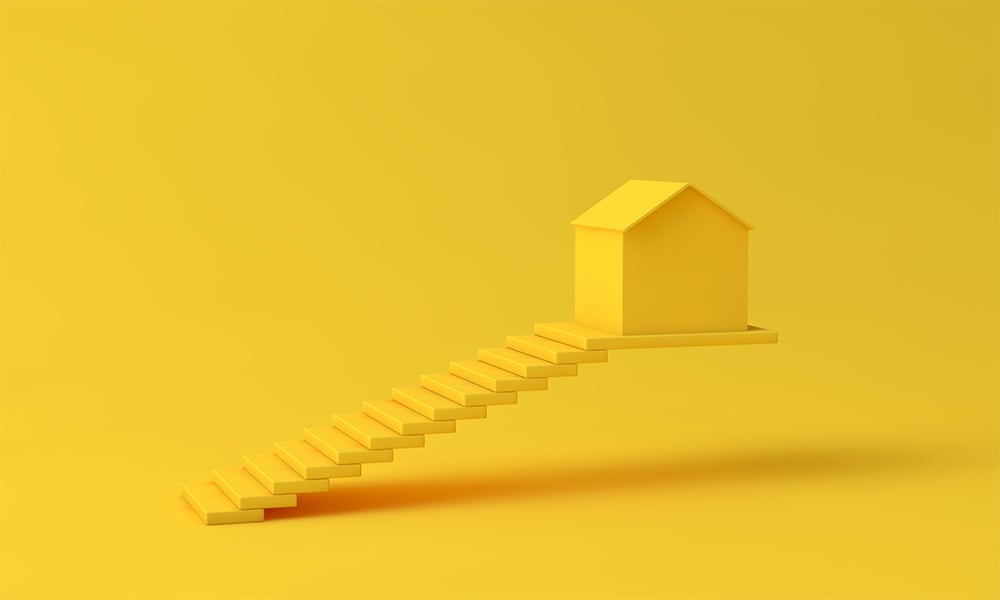House prices have grown at the fastest rate in a decade as buyers take advantage of low interest rates and high household savings – and while rates are on the rise, prices are also likely to keep growing

Capital City house prices have increased at the highest quarterly rate in a decade, according to the latest figures published by the Real Estate Institute of Australia.
The Real Estate Market Facts report found that the weighted average capital city median price increased by 6.8% for houses and 2.7% for other dwellings during the March quarter. Over the 12 months to March 2021, the weighted average median capital city house price increased by 11.1%.
With a median house price of more than $1.3m, Sydney is 49.8% more expensive than any other capital city. On the other end of the spectrum, Perth has the lowest average house price; at $500,000, it is 42.8% lower than the national average.
Canberra was the only city that did not see an increase in the price of houses. In terms of units, Canberra and Brisbane remained steady, but prices decreased in Brisbane; all other capital cities saw an increase, pushing the average capital city price for other dwell-ings up by 3% in the year to March 2021.
It’s not just prices that are rising. REIA president Adrian Kelly said the average capital city rent for a three-bedroom house increased to a median of $452.50 per week in the March quarter.
This is despite the expected trend of people leaving the capital cities as offices relocate, employees continuing to work from home, and closed borders still restricting new migrants.
Even as prices keep increasing, Australians are buying property at record speed. The REA Insights Housing Market Indicators Report shows that the national average number of days that a property for sale was listed on realestate.com.au dropped from 37 in April to 32 in May.
The report also showed that, for the first time, more Australians are looking for properties worth over $1m than under $500,000.
The low cost of debt and high household savings have enabled Australians to buy more expensive properties, with all price categories above $750,000 seeing an increase in the proportion of searches compared the number reported in May 2020.
According to realestate.com.au economist Anne Flaherty, the property market continues to show strength, with demand outpacing supply in May 2021.
“We are seeing properties sell at record speed, so buyers are having to move quickly to compete in these market conditions. While demand may moderate over the coming winter months, views per listing increased in May and are now just shy of the historic high earlier this year,” she said.
While sales have started to slow, they are still well above the levels recorded in 2020. Flaherty expects that the winter market will remain unseasonably active due to continued heightened demand.
“Investor enquiry is increasing, and we are seeing them return to the market, driven by the low cost of debt and expected capital growth. Interestingly, first home buyer enquiry saw a slight rise in May after trending downwards since January,” she says.
“I expect prices will continue to rise over winter; however, with slightly reduced demand, stimulus removed from the market, and rises in longer-term fixed rate mortgage rates, prices are likely to rise at a slower pace.”
Bank mortgage rates have increased over the last couple of months in the run-up to the Reserve Bank of Australia’s term funding facility expiring at the end of June. The facility off ered three-year funding to authorised deposit-taking institutions to reduce funding costs and keep interest rates low, and to encourage ADIs to support businesses.
While the RBA has maintained its position on keeping the cash rate on hold until 2024, the recent rate rises by the banks, with both CBA and the Westpac Group increasing some of their fixed rates, indicate that the ultra-low fixed rate environment is coming to an end.
Mortgage Choice CEO Susan Mitchell said that while she expected fixed rates to increase moving forward, she didn’t think this would slow down buyer activity.
“The reason why I say that is they’re still really low,” Mitchell said. “If it goes from 1.94% up to 2.05% or 2.10%, I’m not actually sure that’s going to affect someone’s decision to buy a house.”
Buyer’s agent and Positively Geared author Lloyd Edge took a different stance, saying that higher interest rates could put the brakes on the high level of growth.
“Low interest rates have been one of the main driving factors for house price growth,” Edge said. “Interest rates increasing will be the thing that will start to curve the growth in the property market.”
He said this wasn’t necessarily a bad thing, given the rapid rate of growth recently experienced. Furthermore, a slower market wouldn’t necessarily mean lower prices.
“It’s not going to make prices go down; it’s just going to stop growth to the extent that we’ve seen,” Edge said.
“At the moment growth is occurring just about every week. I think that’s going to curve, so the rise is going to flatten down a bit.”



